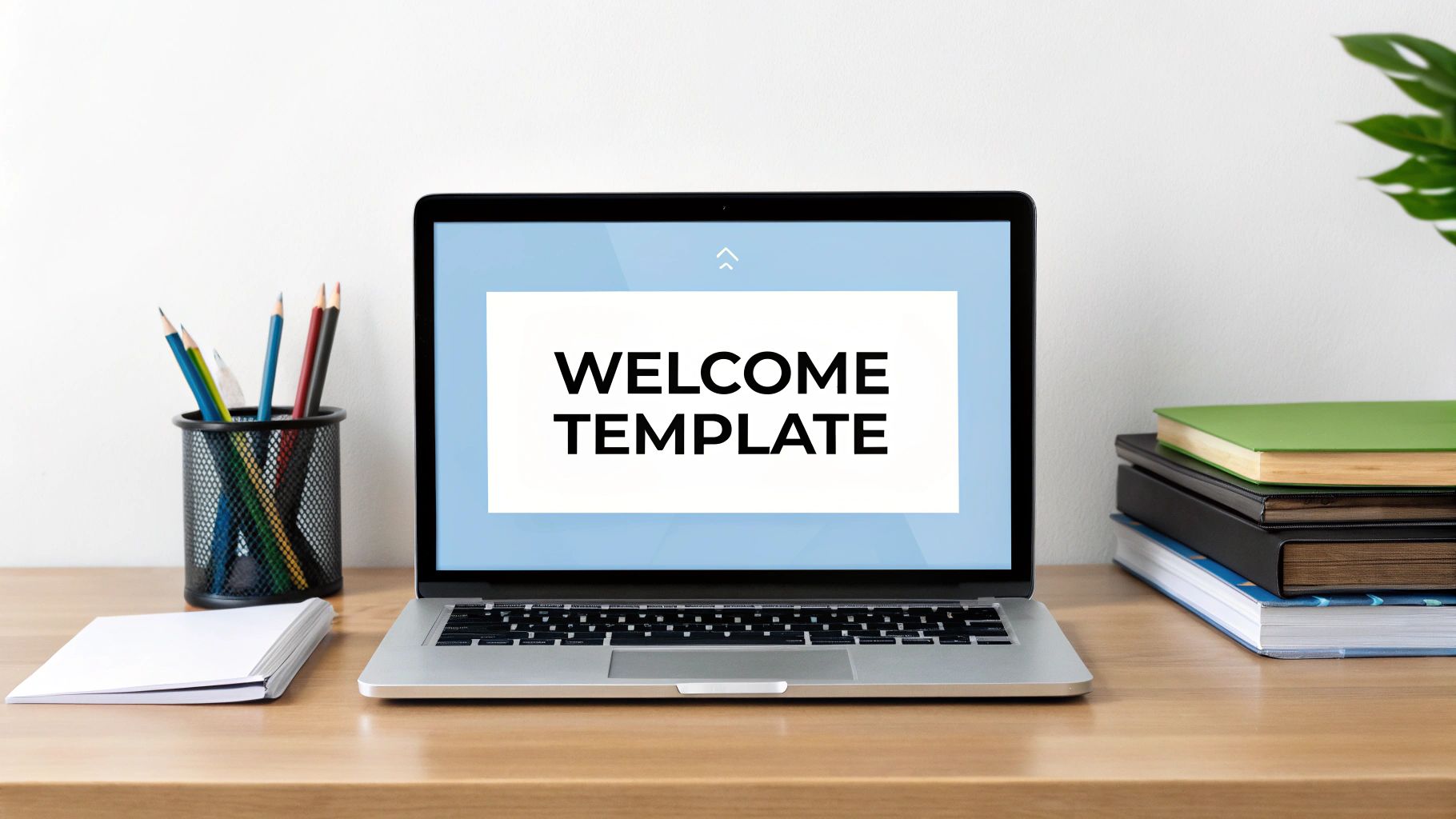
Why Your Client Onboarding Process Makes or Breaks Success

Just like in personal relationships, first impressions matter immensely in business. A well-planned client onboarding process creates the foundation for lasting success. It's the initial experience that shapes how clients view your brand and what they expect moving forward. How you welcome and guide new clients demonstrates your commitment to their success.
When clients experience a smooth onboarding, they develop trust and confidence in your services. Quick responses and clear guidance make them feel valued from day one. Consider a software company that provides easy-to-follow tutorials and responsive support during setup – this approach helps users quickly see the product's benefits while minimizing frustration.
The data shows just how crucial good onboarding is: a difficult process will drive away 74% of potential customers. On the flip side, 74% of users return to websites that are easy to use, showing that simplicity keeps customers coming back. Check out more key stats here: Customer Onboarding Statistics. These numbers highlight why having a clear, straightforward client onboarding process template is essential.
The Impact of Effective Onboarding on Business Growth
Good onboarding isn't just about making clients happy – it directly affects your bottom line. A strong onboarding system improves several key business metrics:
- Client Retention: When clients have a great start, they're more likely to stay long-term
- Lifetime Value: Happy clients buy more services and refer others, increasing their overall value
- Lower Support Costs: Well-informed clients need less help, reducing strain on support teams
By making those first steps clear and simple, you're not just introducing your services – you're starting a partnership built on mutual success. Taking time to craft a solid client onboarding process template pays off through stronger client relationships and steady business growth.
Building Blocks of High-Impact Onboarding Templates
A basic welcome email no longer cuts it. Creating an outstanding client experience requires a well-designed client onboarding process template that smoothly guides new clients through their first steps with your service. Understanding how successful companies structure their templates helps maintain quality while scaling up operations.
Key Components of an Effective Template
Milestone tracking is essential – having clear checkpoints shows clients their progress and what comes next. This could be a simple checklist or a full project management system. Your welcome materials should provide real, immediate value through quick-start guides and key resources. You might find this helpful: How to master your small business marketing strategy.
Setting Expectations and Driving Success
Being upfront about what to expect creates trust and shared ownership. A detailed welcome packet outlining each phase of onboarding and the client's role helps prevent confusion and anxiety. Good communication from day one sets up long-term success. The costs of poor onboarding are clear – companies without strong processes face 47% higher support costs as clients struggle to get started. Learn more here: Customer Onboarding Metrics.
Real-World Examples and Practical Templates
Looking at what works for other companies provides great insights. Many businesses see major gains in client happiness and retention after improving their templates. Key elements include personal welcome messages, interactive checklists, and easy access to help resources. Taking these proven approaches and adapting them for your needs can transform the client experience.
Building for Scalability and Consistency
Your client onboarding process template must grow with your business. Build systems that maintain quality even as client numbers increase. Focus on efficiency while keeping the human touch. Getting these fundamentals right creates an onboarding experience that both welcomes new clients and supports lasting relationships.
Measuring What Matters: Essential Onboarding Metrics

Creating an effective client onboarding process template is essential, but measuring its success can be tricky. Instead of drowning in data, smart companies focus on metrics that directly show how well their onboarding works. By tracking specific numbers that matter, you can spot what's working and what needs improvement.
Key Metrics to Watch
Companies that excel at onboarding pay attention to metrics tied to real business results. One crucial measure is time-to-first-value (TTFV) – how quickly new clients start seeing benefits from your service. When clients experience value faster, they're more likely to stick around.
Another vital number to track is the client churn rate during onboarding. If too many clients leave during this early phase, it often points to specific problems like unclear guidance or insufficient support. Catching these issues quickly helps you fix them before losing more clients.
Setting Up Your Tracking System
Good measurement systems give you useful insights without overwhelming your team. Pick a few key metrics and track them regularly. Many companies use CRM systems and analytics tools to gather data automatically. For example, monitoring how many clients complete each step of your onboarding process helps identify where people get stuck.
Product usage data tells you how well clients adopt your core features. Looking at which features new clients use most helps you understand what drives early success. Learn more about measuring onboarding success here: Customer Onboarding Metrics. And check out proven ways to bring in new clients: Proven client acquisition strategies.
Showing Value and Results
Your measurement approach should show the financial impact of good onboarding. Track metrics like customer lifetime value (CLTV) and client acquisition cost (CAC) to understand the money side. This data proves how much value a smooth onboarding process adds and helps justify spending more to make it even better.
Designing Scalable Workflows That Feel Personal
Growing your business brings an interesting challenge: how do you keep your client onboarding process feeling warm and personal as you scale from dozens to thousands of clients? A solid client onboarding process template helps you deliver consistent, quality experiences while keeping that essential human touch.
Segmenting Your Onboarding Workflows
Break your clients into distinct groups based on key traits like their industry, size, or specific requirements. This lets you create targeted onboarding experiences. For instance, a software company might have different workflows for small businesses versus large enterprises, since their technical needs and support requirements vary. This focused approach ensures each client gets the guidance that fits them best.
Automating for Efficiency, Not Replacement
Smart automation helps you scale, but it shouldn't replace human connections. Use automation for routine tasks so your team can focus more on building relationships. For example, set up automatic welcome emails when clients sign up, then have your team follow up personally. This balanced approach gives you both speed and a human touch.
Building Systems That Grow With You
Your client onboarding process template needs room to evolve with your business. Pick flexible tools and platforms that can adapt as you grow. A good CRM system can handle communications, track progress, and provide useful data insights. Make sure to regularly review and update your processes based on client feedback and results. This keeps your onboarding effective as your business expands.
Real-World Examples of Scalable Personalization
Many businesses excel at keeping onboarding personal while scaling up. Some send custom video messages to welcome new clients. Others assign dedicated specialists to guide each client through onboarding. These approaches show how to maintain individual attention at scale. Study what works for others and adapt those ideas to create a client onboarding process template that builds strong relationships and drives lasting success.
Mastering the Art of Strategic Communication Touchpoints

When onboarding new clients, communication needs to be purposeful and well-timed. A solid client onboarding process involves more than sending routine emails – it requires careful planning of each interaction to build trust and engagement. Following a structured onboarding template helps ensure consistent quality.
Timing is Everything: Understanding the When and Why of Communication
Smart companies plan their client communications with intent. A welcome email right after signup shows clients you value them. Following up a few days later with helpful resources reinforces their decision to work with you. This type of thoughtful sequencing demonstrates that you're actively supporting their success.
Adapting to Client Preferences While Maintaining Consistency
Some clients prefer emails, others like phone calls, and many opt for video meetings. While you should adjust your communication methods to match their preferences, keep your core messages and brand voice steady across all channels. This ensures every client receives clear, helpful information regardless of how they interact with you.
Crafting Templates That Feel Personal
As your client base grows, templates become essential for efficiency. Learn more in our article about the benefits of working with a boutique social media agency. The key is making templates feel personal – use their name, mention their specific needs, and reference their industry. These personal touches make a real difference in how clients experience your service.
Proactive Communication for Difficult Conversations
Sometimes challenges arise with clients. Address potential issues before they become problems. For example, send a helpful email if you notice a client struggling with something. Have clear steps for handling complaints and providing quick solutions. This builds trust and strengthens relationships.
Building Communication Systems That Scale
Your communication approach needs to grow alongside your business. Use tools to handle routine tasks like welcome emails and follow-up scheduling, but keep the personal touch. This frees up your team to focus on meaningful client interactions. Good systems ensure quality communication whether you have ten clients or a thousand.
Human Written Style:
Making Technology Work With Human Connection

Technology should make client onboarding better, not replace the human touch. When used well, the right tools help deliver amazing experiences while freeing up your team to focus on building relationships. Let's explore how successful companies blend tech and personal service.
Picking Tools That Fit Your Business
The market offers many options – from basic project tools to full-featured customer platforms. What works best depends on your specific needs and client onboarding process. A small business might only need project management software and email automation. Larger companies often benefit from a complete CRM system that handles communications, progress tracking, and performance data.
Making Your Tools Work Together
The secret is getting your tech stack to function as one smooth system. Your CRM should connect seamlessly with your email platform to send personalized welcome messages and updates. Good integration saves time and keeps client communication consistent across all touchpoints.
Success Stories From Real Companies
Many businesses effectively use technology in their onboarding process. Some rely on Asana or Trello to manage client progress transparently. Others use CRM platforms like Salesforce or HubSpot to handle communications and automate routine tasks. These examples show how the right tools can improve both team efficiency and client satisfaction.
Fine-Tuning Your Technology Mix
Creating the perfect tech setup takes time and attention. Begin by identifying your core needs and selecting tools that directly address them. Check regularly to ensure your technology still serves you well as you grow. Be ready to add new tools or replace ones that no longer fit. The goal is building a system that helps your team deliver great experiences while working efficiently.
Blending Tech Tools With Personal Service
Remember – technology should enhance, not replace, human interaction. Use automation for routine tasks so your team can spend more time building real connections and providing custom support. When you combine efficient systems with genuine personal attention, you create an onboarding experience that truly works.
Want to develop a client onboarding process that gets results? Learn how Jason Yormark can help you create an approach that combines the best of technology and human service.


Leave a Reply